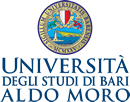Effects of some entomopathogenic fungi on Citrus Mealybug Planococcus citri (Risso) (Hemiptera: Pseudococcidae)
DOI:
https://doi.org/10.15162/0425-1016/452Parole chiave:
Beauveria bassiana, Paecilomyces fumosoroseus, Paecilomyces lilacinus, Planococcus citriAbstract
Citrus Mealybug Planococcus citri is an economically important pest species causing harm on citrus and some other plants. Biological control of the pest is gaining importance because of the problems caused by chemical control. In this study, effects of Beauveria bassiana, Paecilomyces fumosoroseus and Paecilomyces lilacinus against second instar larvae of mealybug were investigated. Healthy potato tubers were dipped into spore suspensions of the entomopathogens with 108 conidia/ml concentration and then infested with mealybugs. Potatoes were then kept in a climatic room with 25±1°C temperature and 60±5% humidity. Alive and dead mealybug individuals were determined 3, 5 and 7 days after applications and mortality rates were calculated. As a result, three entomopathogens caused different rates of mortality on the pest. B. bassiana isolate showed the highest effect and killed all pest individuals 5 days after the application. Mortality rates caused by P. fumosoroseus and P. lilacinus were lower in the first two observations, while they showed 96% and 82% mortality on the seventh day, respectively.







